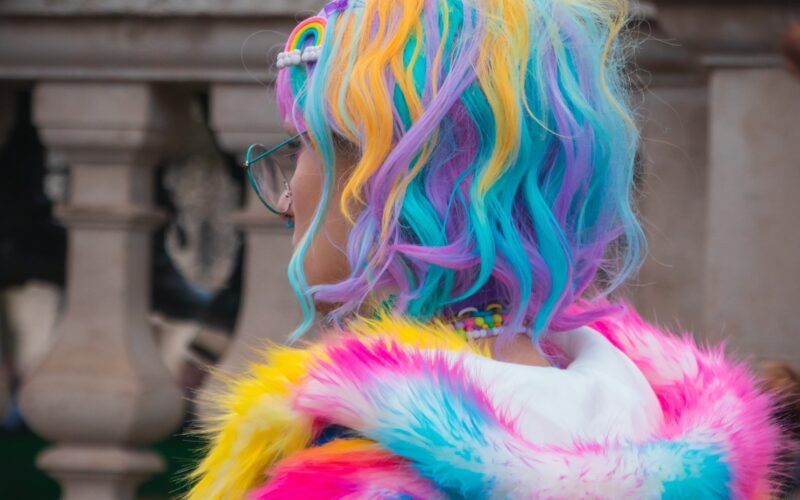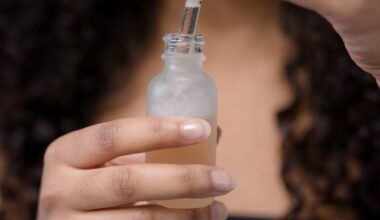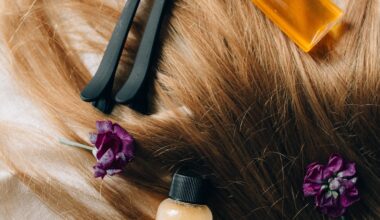Introduction
For countless individuals, hair coloring is more than just a beauty routine—it’s a vibrant form of self-expression. The thrill of transforming one’s appearance, the anticipation as the dye sets, and the big reveal all combine to make coloring a deeply personal and often empowering experience. But like any art form, achieving the ideal shade and maintaining its vibrancy requires understanding and skill. As someone with two decades of hair styling expertise, I’ll walk you through the nuances of timing, frequency, and the best practices to ensure your hair color remains brilliant and long-lasting.
Key Takeaways
- The intricate process of hair coloring and factors affecting its duration.
- The variables that influence how long a coloring session takes.
- Best practices on the frequency of hair coloring.
- The potential risks and rewards of coloring hair multiple times in one week.
- Expert tips to prolong the vibrancy of your hair color.
The Transformation of Hair Color: How Long Does It Take?
Stepping into a salon or preparing your home space for a coloring session is always accompanied by an air of excitement. The transformation journey you’re about to embark on is filled with anticipation, but one burning question often lingers: how long will this take?
The Coloring Process Unveiled
Hair coloring isn’t just about slathering on a dye and hoping for the best. It’s a multi-step process, carefully orchestrated. First, the hair is usually prepped with a protective base to shield the scalp and strands. The color is then mixed, applied meticulously from the roots to the tips, and given time to develop. Depending on the desired result, this development can range from a mere 20 minutes for a simple semi-permanent gloss to over an hour for permanent dyes or dramatic color shifts.
Individual Factors that Play a Role
No two heads of hair are the same. The duration of the coloring process can vary based on several factors:
- Hair Type and Texture: Coarse hair can often take longer to absorb color than fine hair.
- Initial Hair Color vs. Desired Shade: Going from a deep brown to platinum blonde requires more time than a subtle change.
- Hair Condition: Hair that’s damaged or heavily treated might process color faster due to its porous nature. But remember, faster doesn’t always equate to better.
- The Coloring Product: Some dyes are crafted to work speedily, while others are slow and steady, designed for a richer, deeper hue.
Setting Realistic Expectations
While we all adore a swift transformation, it’s crucial to set realistic expectations. Remember that professional stylists will prioritize the health of your hair over speed. They have a keen understanding of how long it takes for hair coloring, ensuring the dye is given the optimal time to work its magic. So, the next time you’re gearing up for a change, allocate a good chunk of your day, grab a magazine or chat with your stylist, and let patience lead the way.
Timing Is Everything: Factors Influencing Hair Coloring Duration
In the world of hair coloring, timing isn’t just about minutes and hours; it’s an essential factor that can make or break your desired look. A few extra minutes can transform a subtle tint into a bold statement, while cutting short can lead to uneven shades. Let’s dive deeper into the factors that can influence the time hair color remains intact and how to harness them to your advantage.
Delving into Color Types
Different color products have varying staying powers and thus influence the duration:
- Temporary Colors: These are like gentle whispers to your hair. They wash out after a few shampoos, making them perfect for those who love experimenting without commitment.
- Semi-Permanent Colors: Think of these as the flings of hair dyes. They stick around a bit longer, usually up to 8 shampoos, but they do fade with time.
- Permanent Colors: These are your long-term partners. They embed deeply and only grow out or fade slightly over prolonged periods.
Techniques Make a Difference
The way the color is applied impacts its longevity:
- Highlights and Balayage: These techniques often last longer than full-head coloring since the color contrasts with the natural hair, making regrowth less noticeable.
- Root Touch-Ups: This method focuses on coloring the regrowth at the roots, which can be quicker but might require more frequent sessions.
Your Hair’s Story Matters
The history and condition of your hair play a pivotal role in determining color duration:
- Virgin Hair: If your hair hasn’t been previously colored, it might take the color differently and possibly last longer.
- Porous Hair: Over-processed or damaged hair can lose color faster as the color molecules escape from the gaps in porous strands.
Maintenance: The Secret Weapon
How you treat your hair post-coloring affects the color’s lifespan. Using color-safe shampoos, avoiding excessive sun exposure, and minimizing heat styling can all extend the life of your hue. Consistency in maintenance ensures that your vibrant locks stay radiant for as long as possible.
How Often Is Too Often: The Frequency of Hair Coloring
Coloring your hair is exhilarating. The transformation, the renewed confidence, the compliments – it’s all downright intoxicating. But amidst this thrill, a pertinent question arises: How often can you indulge in this treat without compromising the health of your locks?
Understanding Hair Growth and Color Regrowth
Hair typically grows about half an inch every month. For those who color their entire length, this means you’ll start to see your natural shade peeking at the roots in a few weeks. Root touch-ups can often be the solution here, allowing you to maintain a seamless look without coloring the entire length each time.
The Dictates of Different Dyes
- Temporary Colors: Since they wash out after a few shampoos, you can refresh them as often as you’d like, provided your hair feels healthy.
- Semi-Permanent Colors: These can be reapplied every 4-6 weeks or as the color fades. The great thing is, they’re typically less damaging.
- Permanent Colors: Root touch-ups can be done every 4-6 weeks. However, for full-length coloring, it’s wise to wait 8-10 weeks, if not longer, especially if lightening the hair.
Listen to Your Hair’s Health
If your hair starts feeling dry, brittle, or shows signs of breakage, it’s time to give it a break. Over-processing can lead to significant damage. Introduce deep conditioning treatments, protein treatments, and give your tresses time to recover.
The Balancing Act
It’s essential to strike a balance between maintaining your desired color and ensuring your hair remains healthy. Remember, the beauty of hair color shines best on healthy, well-maintained hair. If you’re ever in doubt, consult with your hairstylist. They can offer personalized advice tailored to your hair’s needs.
Coloring Hair Multiple Times in One Week: Is It Advisable?
We’ve all been there. A shade that didn’t turn out as envisioned or the sudden urge to switch from a daring red to a subtle blonde for a last-minute event. The allure of multiple coloring sessions in one week is tempting, but is it wise for your hair’s health?
- The Allure of Rapid Changes
Whether it’s the result of a DIY color job gone awry or simply the thrill of a quick transformation, there’s no denying that changing hair color in quick succession can be enticing. But it’s vital to understand what such frequent coloring does to your hair.
- The Impact on Hair Health
Coloring involves a chemical process where the hair cuticle is opened to deposit or remove color. Doing this repeatedly in a short time frame can:
- Make hair more porous, leading to rapid color loss.
- Cause dryness, breakage, and split ends.
- Lead to an uneven color result or unpredictable shades.
- The Color Removal Dilemma
If the reason for wanting to color again is to correct or change a recent color, consider the process. Stripping the hair of dye, especially if it involves bleaching, can be extremely harsh, leading to significant damage.
- When Is It Safe?
While there’s no strict rule, it’s generally advisable to wait at least 48 hours between coloring sessions to allow the scalp to recover. However, even then, it’s crucial to ensure that hair is conditioned and treated with care to minimize potential damage.
- Tips for Those Who Venture
If you’re determined to color multiple times in one week:
- Opt for gentle, ammonia-free colors.
- Ensure deep conditioning between sessions.
- Consider seeking professional help for corrections rather than risking further at-home mishaps.
Long-Lasting Color: Tips for Retaining Hair Color Vibrancy
The joy of unveiling a new hair color is unparalleled, but the true challenge lies in retaining that initial vibrancy and shine. Over the years, I’ve learned that the longevity of hair color isn’t just about the dye used, but also about the care that follows. Here’s how you can make your luscious shades last longer and continue turning heads:
- Cold Water is Your Friend
Hot showers are a treat, but when it comes to preserving hair color, cold water is the way to go. Hot water can open up hair cuticles, allowing the color to wash away more easily. Using cold water helps seal those cuticles, locking the color in.
- The Power of Color-Safe Products
- Shampoos and Conditioners: Opt for sulfate-free, color-safe shampoos and conditioners. They are gentler on dyed hair and help maintain color vibrancy.
- Styling Products: Look for products explicitly designed for colored hair. They often contain protective ingredients that shield the hair from fading.
- Protection from the Sun
Just as prolonged sun exposure can fade fabric colors, it can also fade hair color. Hats, scarves, or UV protection sprays can help shield your hair from the sun’s powerful rays.
- Limit Your Swim Time
Chlorine in swimming pools can strip color from hair. If you can’t resist a dip, consider wearing a swimming cap or saturating your hair with a leave-in conditioner before diving in. Always rinse thoroughly after swimming.
- Deep Conditioning Rituals
Colored hair tends to lose moisture faster. Regular deep conditioning treatments can replenish that lost moisture, keeping hair healthy and color vibrant.
- Give Heat Tools a Break
Frequent use of heat tools can lead to color fade. When you must use them, always apply a heat protectant and use the lowest setting possible.
- Embrace Dry Shampoo
Washing hair too often can lead to quicker color fade. Dry shampoo can be a lifesaver in extending time between washes and keeping your color fresh.
- Consult Your Stylist for Touch-Ups
Regular touch-ups can refresh your color and address areas where fading has occurred. Always consult with your stylist about the best timing for touch-ups to maintain optimal hair health.
Conclusion
Over two decades in the hair styling and coloring industry, I’ve seen a myriad of shades – from the most natural hues to the brightest neon colors. Each individual’s hair coloring journey is unique, but there’s a universal truth that binds us all: the desire to have vibrant, long-lasting color.
Hair coloring isn’t just about selecting a shade from a chart. It’s an art, requiring an understanding of timing, frequency, and aftercare. As we’ve unraveled in this article, the journey starts long before the dye touches your strands and continues well after you’ve stepped out of the salon or rinsed out that home coloring kit.
- Timing Matters: Knowing how long the process takes, considering factors like color type, technique, and hair condition, ensures that you set aside adequate time for the best results.
- Frequency Isn’t One Size Fits All: While the allure of frequent color changes is tempting, it’s essential to listen to our hair’s health signals, ensuring we don’t color too often or too soon.
- Aftercare is King (or Queen!): To keep that newly-colored hair vibrant and shiny, a dedicated aftercare routine using the right products and practices is a must.
In the end, while the shade might fade, the memories and confidence that come with a fresh color remain. Armed with the knowledge from this guide, you’re now ready to explore, experiment, and express yourself through the magnificent art of hair coloring.
Additional Resources
For those eager to dive even deeper into the world of hair coloring, here are some recommended readings and expert opinions to guide you further:
- “The Chemistry of Hair Coloring” – An in-depth look at the science behind the dyes.
- “Modern Techniques in Hair Coloring” – Explore the latest trends and innovations.
- “Sustainable Hair Care for Colored Hair” – Merging beauty with eco-consciousness.
Thank you for joining me on this vibrant journey into the world of hair coloring. With passion and care, you can achieve and maintain the shades of your dreams!






